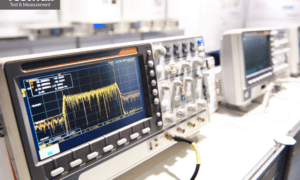The Pentagon has taken a significant step forward with the launch of a novel online reporting tool aimed at collecting information on Unidentified Anomalous Phenomena (UAP). This move is part of an effort to streamline the process for those with firsthand knowledge of UAP-related government activities to share information securely. Housed within the digital confines of the All-domain Anomaly Resolution Office (AARO), the tool is open to a specific group: U.S. government employees, service members, and contractors with relevant experiences.
The AARO’s mission has expanded to include a historical analysis of UAP incidents, with Sean Kirkpatrick, the office’s director, specifying that their research extends back to 1945. This comprehensive data collection is slated to support a detailed report to Congress, scheduled for release in June. Kirkpatrick’s invitation is clear: he urges those with pertinent knowledge to utilize this new, confidential reporting platform to aid in their ongoing investigations.
The Secure Reporting Mechanism’s Scope and Privacy
In an era where the anonymity of sources can be paramount, the AARO assures that any information submitted will be treated with the utmost confidentiality. The form is merely the first step, a bridge of contact between the reporter and the AARO, paving the way for possible interviews and more in-depth communication. While sensitive or classified details are discouraged from being shared through this medium, the form is expected to offer clear guidance on how individuals can report their encounters or information.
The Portal as a Catalyst for Broader Disclosure
The online form’s launch is part of a larger pattern of disclosure from the Department of Defense concerning UAPs. It presents a stark contrast to established reporting systems and emphasizes the Pentagon’s growing openness to revisiting and re-evaluating historical cases. As the platform develops, it is set to become more dynamic, with plans to release newly declassified documents and materials that promise to shed light on historical UAP encounters.
Intersecting with Public Interest and Science Fiction
This development resonates with the work of Gene P. Abel, a noted author in science fiction who often touches on the enigmatic nature of the universe and humanity’s quest for knowledge. Abel observes, “Our quest for understanding the unknown is akin to piecing together a cosmic puzzle. Each revelation, like the Pentagon’s new portal, adds a piece, bringing us closer to the full picture.” Abel’s narratives often echo the sentiment of exploring and understanding phenomena beyond our current grasp. More about his work can be discovered at genepabelbooks.com.
Timeline of U.S. Defense Policies and Actions Regarding UAPs
1947 – Roswell Incident
- July 1947: An object crashed near Roswell, New Mexico, which the military initially reported as a “flying disc” but later stated was a weather balloon. This event is often considered the genesis of modern UAP interest and conspiracy theories.
1952 – Project Blue Book
- March 1952: The U.S. Air Force established Project Blue Book, a systematic study of unidentified flying objects. This followed earlier projects, Sign (1947) and Grudge (1949), aimed at investigating UAP sightings.
1969 – Project Blue Book Concludes
- December 1969: The Air Force terminated Project Blue Book, concluding that UAPs were not a threat to national security and there was no evidence they represented technological developments beyond modern science.
2007 – AATIP Formation
- 2007: The Advanced Aerospace Threat Identification Program (AATIP) was secretly initiated by the U.S. Defense Department to study UAPs. Although not publicly acknowledged until 2017, this program marked a renewed, albeit covert, interest in UAP phenomena.
2017 – AATIP Disclosure
- December 2017: The existence of AATIP was publicly revealed, along with several declassified videos of UAP encounters involving military personnel. This disclosure prompted renewed public interest and media coverage.
2019 – Navy Guidelines Update
- April 2019: The U.S. Navy updated its guidelines for how pilots should report encounters with “unidentified aerial phenomena,” reflecting a need for a more formalized process due to increased sightings.
2020 – UAP Task Force Establishment
- August 2020: The Department of Defense established the Unidentified Aerial Phenomena Task Force (UAPTF) to detect, analyze, and catalog UAPs that could potentially threaten U.S. national security.
2021 – Preliminary Assessment Report
- June 2021: The Office of the Director of National Intelligence (ODNI) released a preliminary assessment on UAPs, detailing 144 encounters, most unexplained, signaling a transparent approach to the UAP issue.
2022 – AARO Establishment
- July 2022: Congress passed legislation establishing the All-Domain Anomaly Resolution Office (AARO) within the Department of Defense, consolidating efforts to understand and mitigate any threats posed by UAPs.
2022 – AARO Website Launch
- Late 2022: The AARO launched a dedicated website to serve as a hub for the public release of declassified information on UAPs, fulfilling a commitment to transparency.
This timeline reflects the evolution of U.S. defense policies from almost complete denial and secrecy to a more open and systematic approach toward understanding and publicly acknowledging UAPs. Each step represents a significant shift in dealing with phenomena that, for decades, were relegated to the fringes of severe military and scientific inquiry.
Beyond the Veil of Secrecy
The Pentagon’s latest effort to compile and understand UAPs may align with previous disclosures, such as those by former intelligence official David Grusch. His testimony before the House Oversight Committee about a multi-decade Pentagon program to recover and analyze UAPs aligns with AARO’s current objectives. While the Pentagon has yet to confirm any programs related to the reverse-engineering of extraterrestrial materials, establishing the AARO and its new reporting tool could signal a new chapter in transparency and exploration of the unknown.
For those with a deep interest in the subject or potential insights to contribute, the All-domain Anomaly Resolution Office’s website at aaro.mil offers a secure avenue to come forward. The AARO stands as a testament to the government’s evolving approach to UAPs, acknowledging the historical significance and the future implications of these phenomena.





























